There is a curious new token running up the ladder on CoinMarketCap (CMC). The “KICK Token” rose to rank 33 by Market Capitalization, now sitting at $324,790,597 (was just $21,000,000 a month ago). Lets take a closer look at this “asset” to find out what it is, and to determine how and why there is such a sharp price increase.
In this article I take a look at the “KICK ecosystem,” recent developments surrounding this surge on CMC, and investigate the financial data surrounding the token by using Nakamoto Terminal in Splunk Enterprise (you can skip to the last section for this).
Where did the KICK token come from?
Many people recently first heard about the token by seeing it appear on their wallet software out of thin air. The token was airdropped to Ethereum users in batches of 888,888 KICK (check it out on Etherscan).
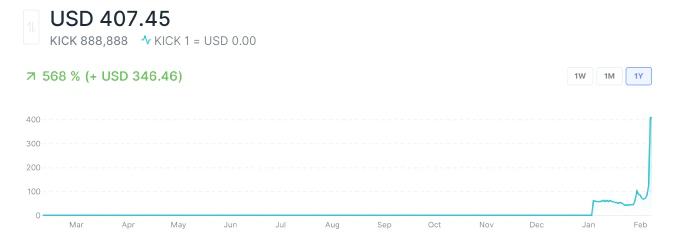
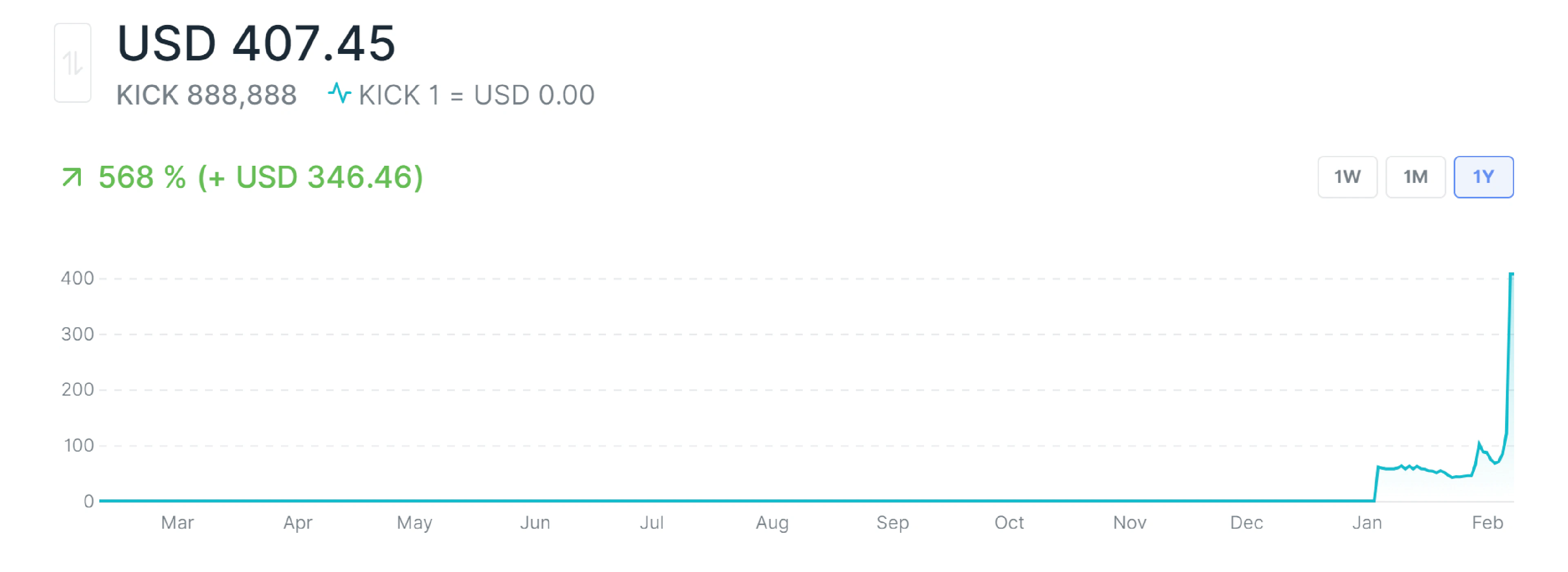
Curious users might find this in their wallet and decided that they would rather cash out this new token (which they know nothing about) for some extra BTC or ETH. At this point they would likely Google search which exchanges allow trading of KICK. The exchanges that list the token, however, are few. We don’t see any major players like Coinbase, Kraken, or Binance reporting trade volumes:
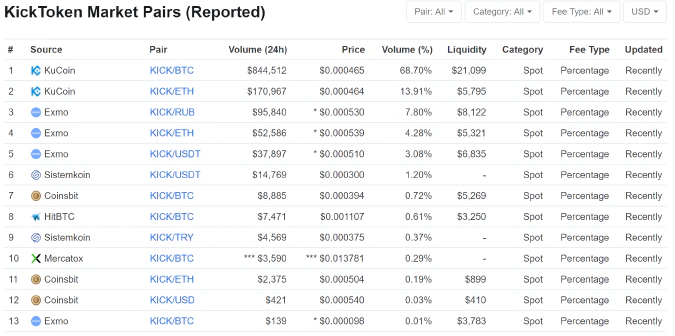
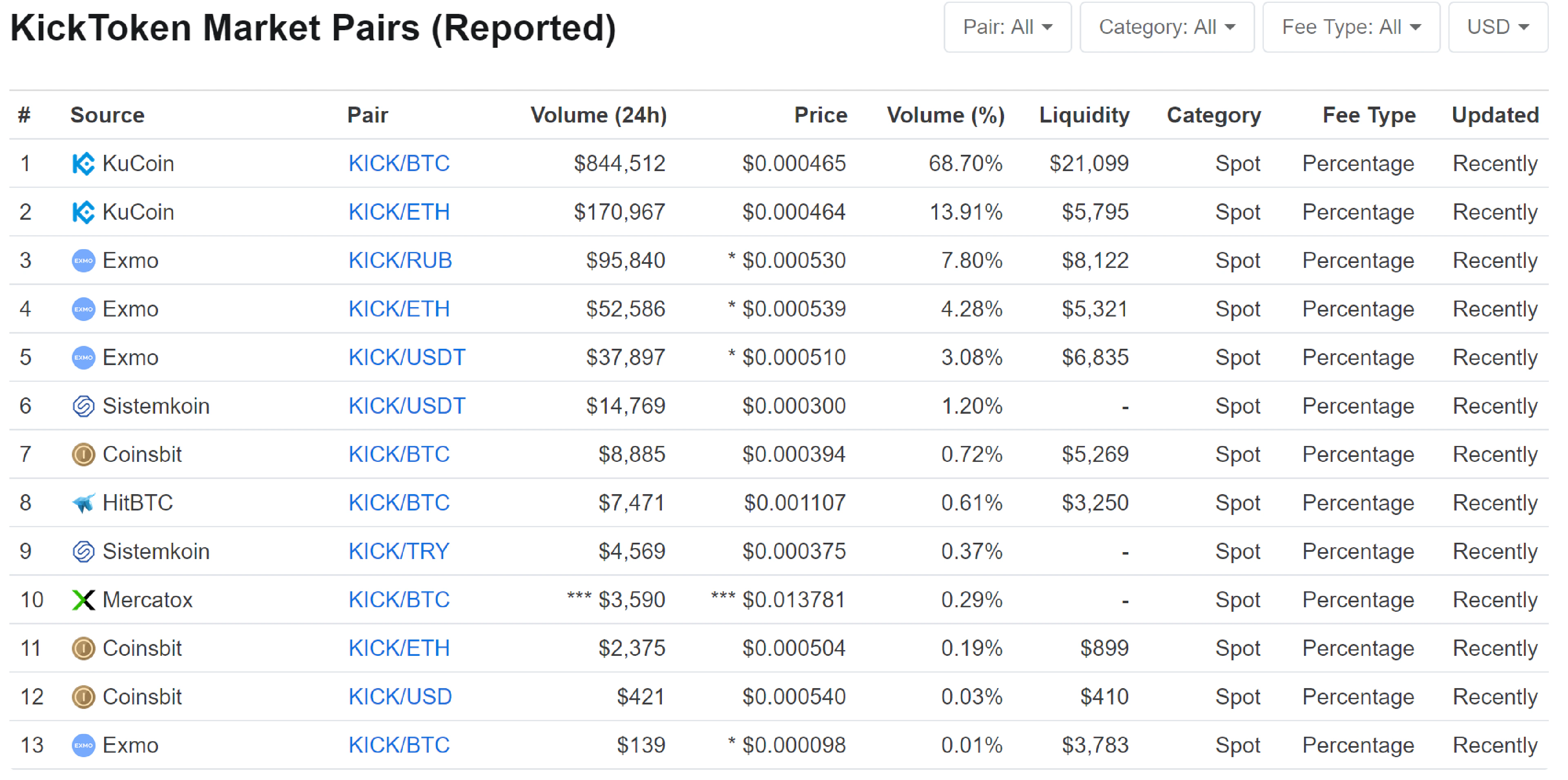
On the KICKICO subreddit there are numerous posts made by surprised and confused individuals trying to understand what this token is, or how to sell it (1, 2, 3). It seems like the tokens will only be spendable by use of the KICKEX exchange, or other platform-affiliated means; it is concerning that thousands of unknowing recipients could be putting their personal information, and perhaps further capital into a project which no one seems to know much about.
What is the KICK Token?
There was a token sale that ran in August and September of 2017. It was sold to investors as a full “crypto ecosystem.” The Whitepaper states:
It represents a complete overhaul and expansion that encompasses an upgraded KICKICO website, a state-of-the-art exchange (KICKEX), a white label token sale solution (KICKDESK), STO listing and trading, a unified login system (KICKID), a multicurrency wallet (KICKWALLET), a crypto payment gateway (KICKPAY), ad network integration (KICKCPA), a referral network (KICKREF), a comprehensive app (KICKMOBILE), and new exchange pricing innovations (AIO and IECO). At the center of this vertically integrated ecosystem is one ofthe most exciting coins in crypto, KickToken, which expands to fill new use cases in our ever-growing KICKONOMY.
Around the time of the KICKICO, a few analysis and review posts appeared like this one (which stated “There is no reason to buy these tokens”), and even a Forbes article which covered the ICO following a press conference at the Ritz Carlton in Moscow.
In Oct 2017, the KICK token first appeared on CMC.
Unfortunately for those who bought in:
- The ICO was rather unsuccessful (as were most), and the token price gradually fell from $0.33 to >$0.00001.
- The ICOholder page for the token has an “ it May Be a Scam” warning at the top of the page.
- The KickToken Github page has only 2 commits — the latest was 5 months ago by user “ezykov”.
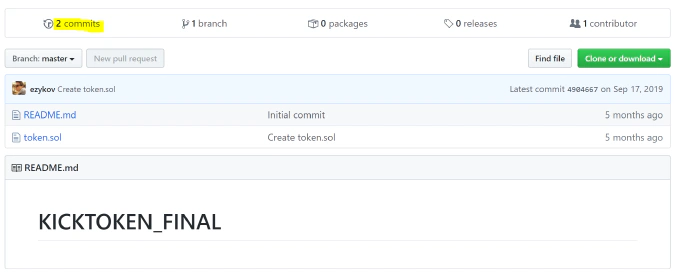
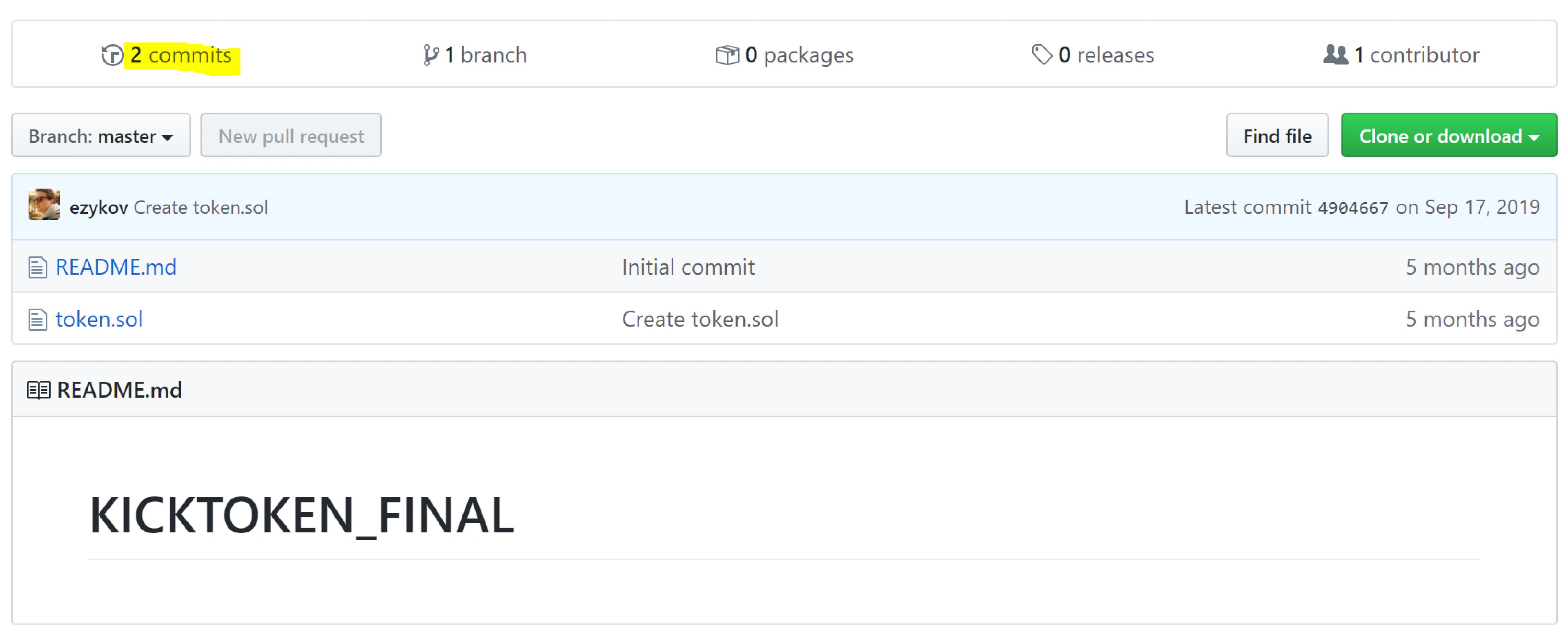
KICK’s Return
Most ICO’s that go to zero (or at least approach it) don’t ever recover. You can find lists of these “dead coins” on websites like Coinopsy. Strangely, KICK has seen a recent surge in price and activity.
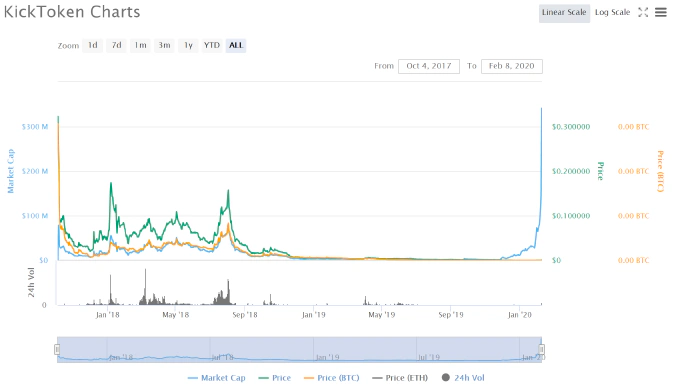
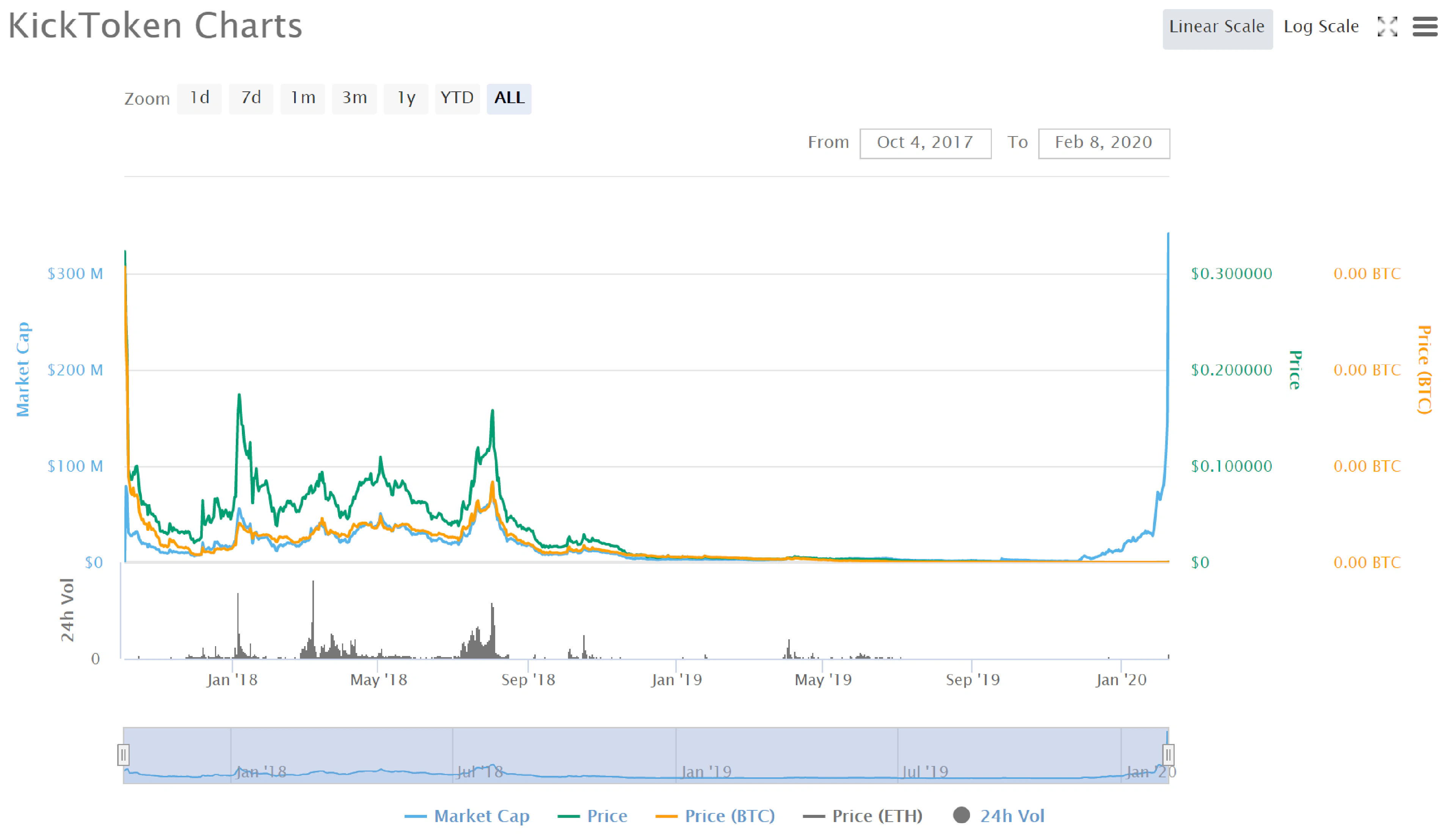
The project website’s only “core member” listed is the CEO, Anti A. Danilevski. He wrote an article in hackernoon at the end of 2019 which strangely talks at some length about various scam exchanges and projects, before mentioning the launch of KickEX for 2020:
Only the most trustworthy exchanges, like KickEX, who operate within the law, will survive. A market consisting of a few high-quality exchanges is far healthier for consumers than one with thousands of options but no guarantee that your money is safe.
At Kick we’re simply focused on delivering an exchange which redefines how digital assets are traded. Set for public launch early next year, KickEX is a truly next-gen addition to the Kick Ecosystem which has institution-grade technology, low fees and some unique trading tools designed for professional traders.
There was an article posted on Jan 9th 2020, KickEX Review: KICK token resurrection scheme, which states:
KickEX affiliates having to buy into KICK to withdraw commissions probably accounts for the recent spike in activity.
Again not a problem in and of itself; KickEX appears to be a legitimate enough exchange, but that’s not the whole story.
What you’re essentially buying into, the “Kick Ecosystem” as it’s referred to, is a community of people who are desperate to cash out.
Market Manipulation Investigation
Using Inca’s data solutions in Splunk Enterprise, we can analyze financial data surrounding KICK. Because the unsolicited token have been airdropped to so many users (inflating the current supply to over 750,000,000,000 tokens), the marketcap has also shot up (because the tokens cannot actually be sold, which would in turn plummet the listed price). There is essentially no way that users can actually short the token even if they have almost a million tokens. The whole ploy acts as free advertising for unsuspecting retail investors who will notice a large balance increase on their wallet software which steadily increases in (fake) market value.
Now I will look a little bit closer at the reported trading of this token going on, because we know it isn’t related any of the frozen tokens from the airdrop. There might be a small concentration of accounts affiliated with the “KICK ecosystem” manually trading the token up on these exchanges. Another possible scenario I see is that the exchanges are actually involved in (or at least allowing of) the market activity.
We can see that reported trading volumes seem to be coming from just a few markets, and are highly centralized on KUCOIN, and the other exchanges (with much lower volumes) are not very well known.
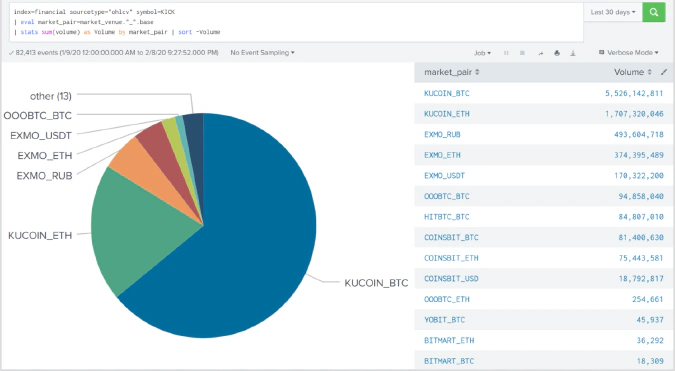
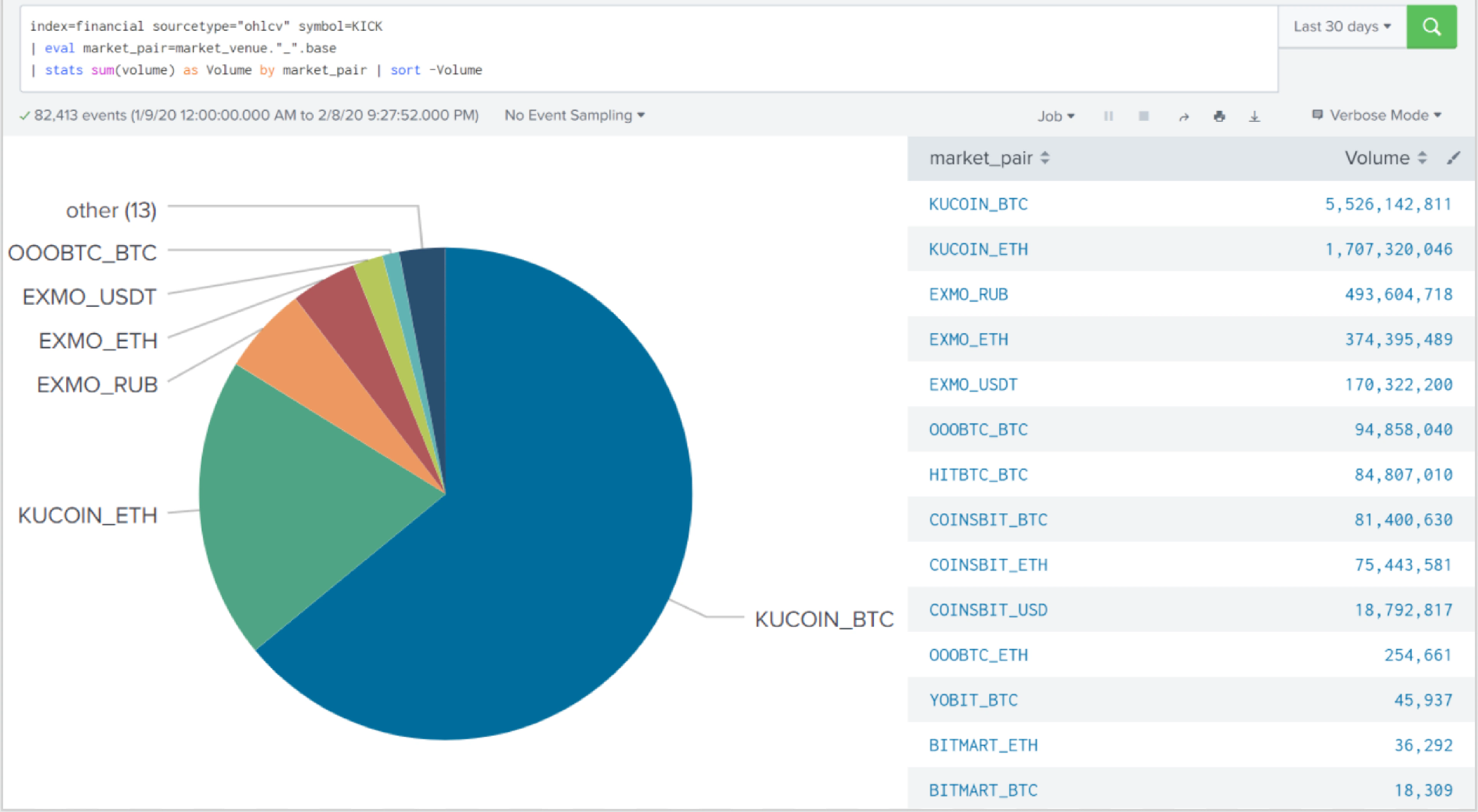
Next, we see high price deviations between these markets, which widens as the price continues to explode.
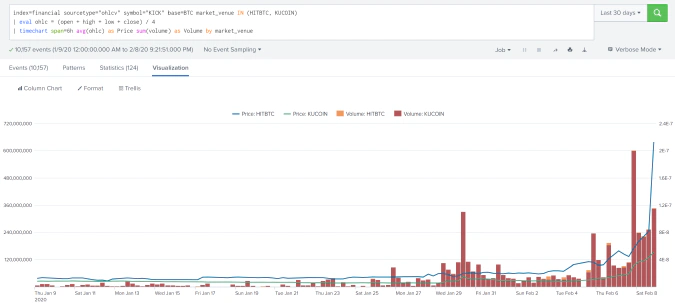
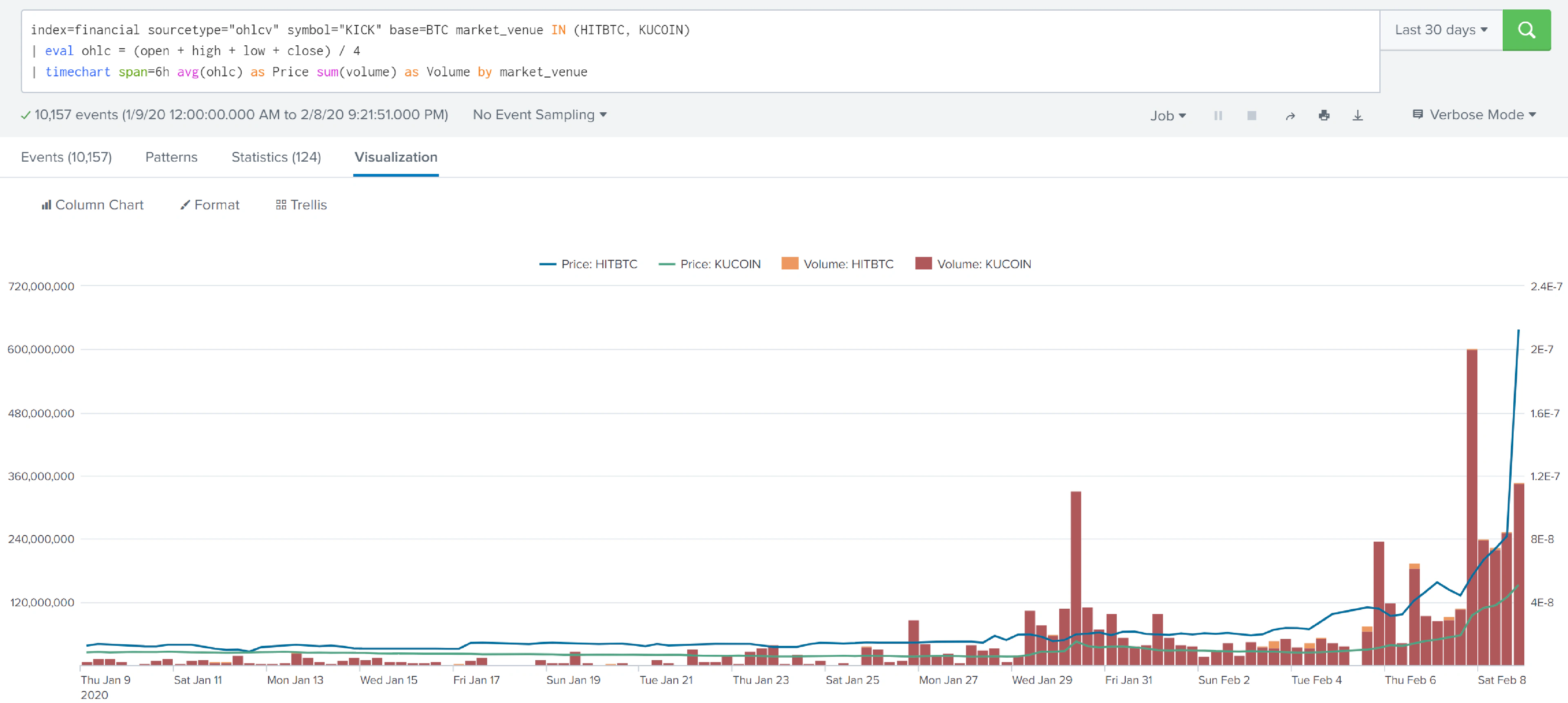
Already these do not appear to be normal market behaviors, but we can use more sophisticated methods of analyzing the data to look for further anomalies:
Here, I generated trade size distributions from the last 30 days for KICK. Normally, these should all be close to normal distributions, with only slight variations between exchange. Also note the scale differences by exchange.
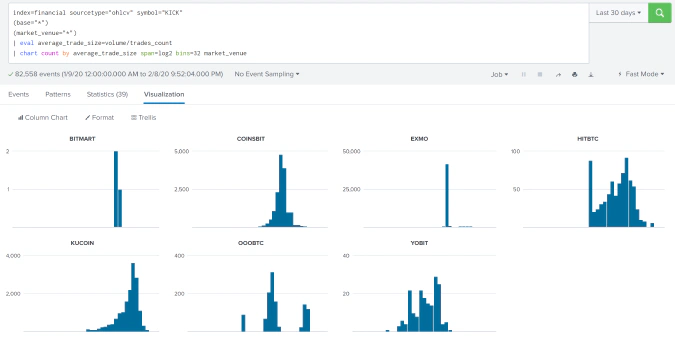
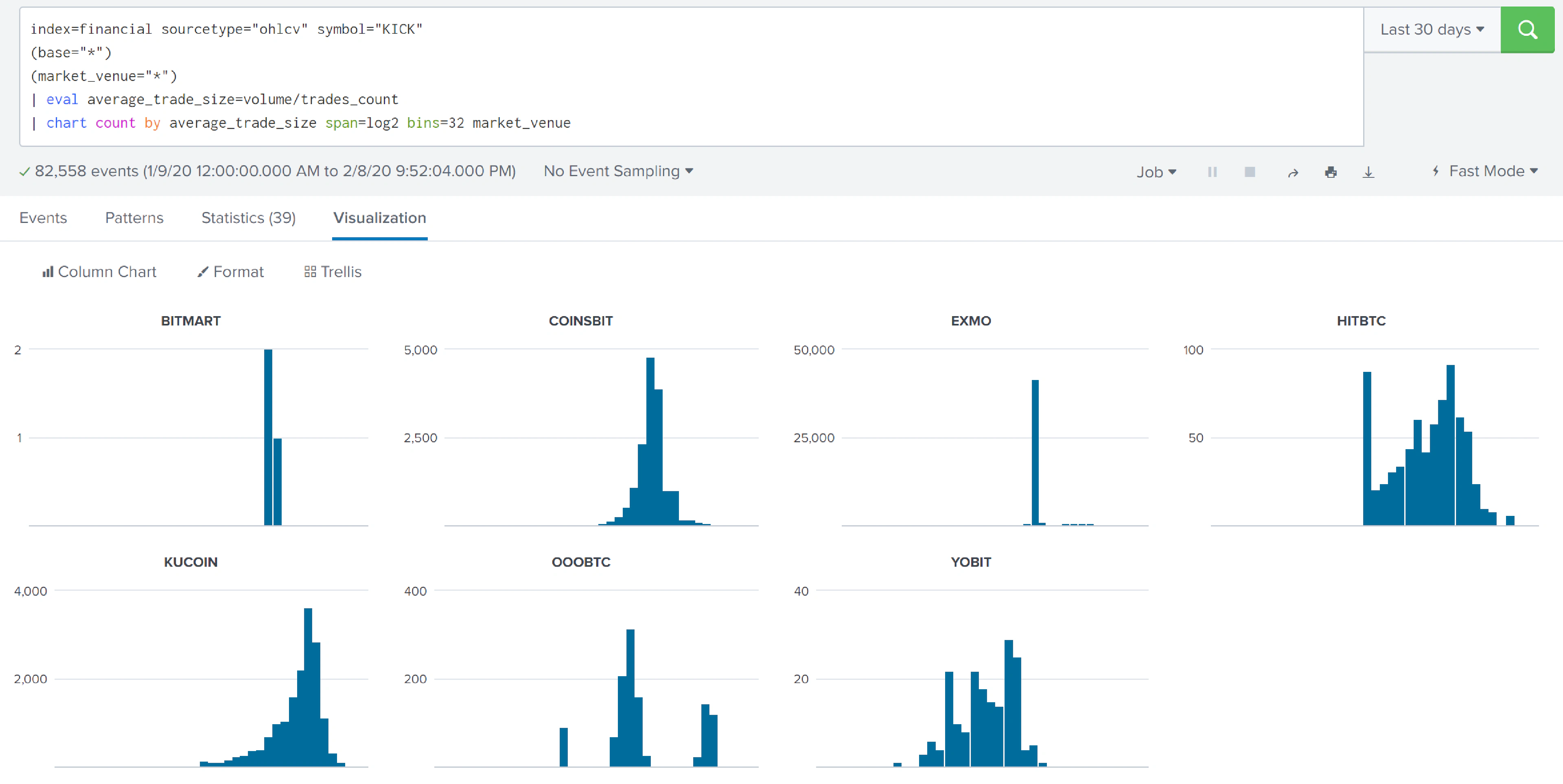
BTC distributions over the same time period, for comparison (including some of the same exchanges and some larger ones for reference):
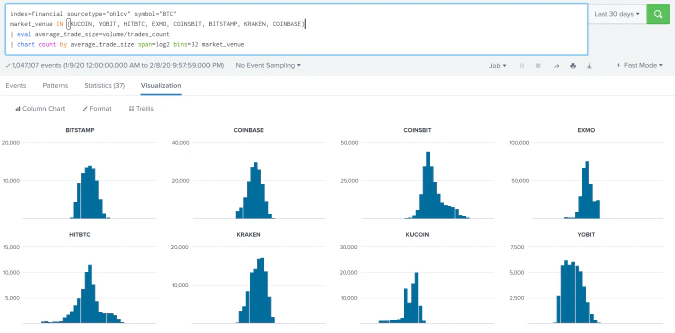

The differences in trade distributions can be explained by a variety of factors including exchange policies (such as maker/taker fees and platform trading tiers), different user demographics, fiat or stablecoin options available, trading API availability, and deposit + withdrawal fees/incentives. While the above factors suggest that trading activity should not be identical across market venues, analyzing trade data via multiple methodologies can certainly direct our attention to abnormalities worthy of further investigation.
ACFE published this article for how to discern naturally occurring statistical deviations from fraud. Benford’s Law is an observation of numerical data sets that states that the leading significant digits do not occur in an even distribution (~11% for leading digits 1–9). We can look at the leading digits of bids and asks for KICK to see how they compare to the Benford model:


All of these components together gives us a fuller picture of what might be going on with regards to the KICK ERC-20 token.
My personal instinct (although I am not a financial adviser, and nothing I say is financial advice) is to stay far away from this token or its exchange. I would not recommend “investing” any fiat, BTC, or ETH in this project, or give out personal information to affiliated services to anyone I know personally.